How do you find links that are actually helping you rank higher in Google?
This is one of the most burning questions in SEO.
Clients want to use link building to get to the top of SERPs – but they either don’t know how to do it or are doing it in the wrong way.
Some of them focus more on quantity – thinking that the more links they build, the better. However, this is not always the case.
However, even quality is not always the top factor that determines the success of the link.
Even the most relevant links of the highest quality aren’t created equal.
Sometimes, just one link could substitute hundreds of other links and really make a gigantic change in your SEO performance.
At least, that’s what we’ve seen a good number of times when we’ve been lucky enough to secure a link that had a solid flow of organic visitors and a good number of referring domains.
Advertisement
Continue Reading Below
Ready to learn how to get links that will really make a change in your SEO visibility?
Read on for a detailed overview of how to determine the link gap and link velocity to see where you stand compared to your rivals.
How to Determine Link Gap
We’ll start our journey to building an effective link building strategy with a definition of the link gap.
In our case, it is the number of links that your competitors have versus the number of links that your site owns.
Naturally, before you start searching for links, you need to know how many of them you need.
Here’s a quick formula from Alan Silvestri that will help you get this number:
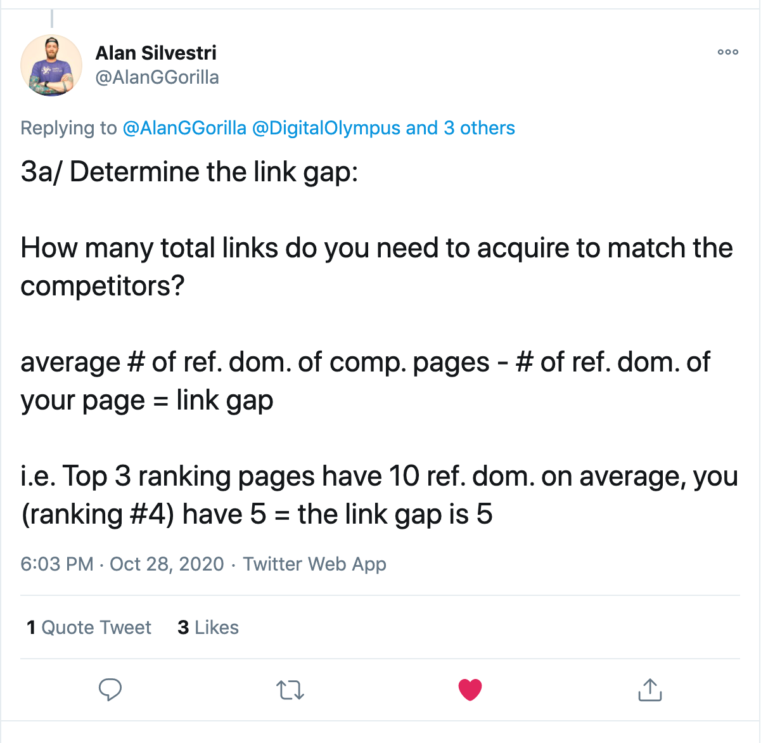
However, the easiest way to calculate the link gap is to go to the Ahrefs SERP overview report and see which websites are outranking yours.
Advertisement
Continue Reading Below
To give you a bit more context, let’s take a look at the URLs that are outranking my page by the search term “backlink analysis tools” at the moment:

As you can see, my page has 42 referring domains, while pages that are ranking higher have from 100 to up to 2,000.
I don’t want to take into consideration the Ahrefs page that holds the first position since it has over 2.5K referring domains.
However, it’s quite doable to get my page at the top 3 results.
All I need is to build roughly 40 more links to get there.
However, I think one more thing is worth mentioning here – the quality of links.
So, before setting up a milestone for 50 additional links, I would also have to check what kind of sites are linking to those URLs in terms of their domain authority.
For instance, in the case of Linkgraph.io’s page, it has only a few really good links while the rest look more like link garbage:
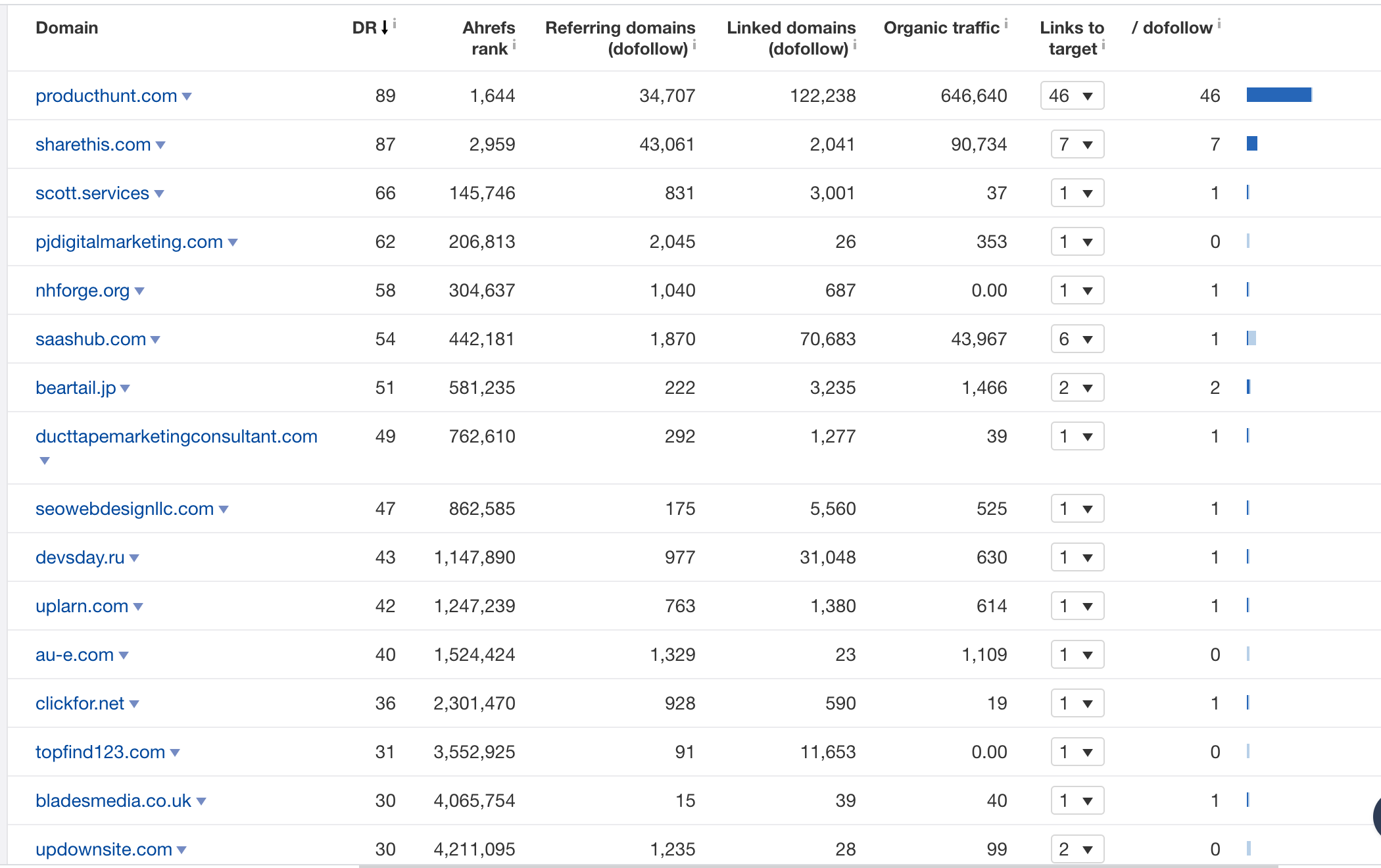
Hence, the quality of links is definitely something you need to take into consideration as well.
Advertisement
Continue Reading Below
Most probably, if the top ranking domains have the same situation as Linkgraph.io in the example above, this would mean that you need to build fewer links but get them from websites with a decent DR to close this gap.
Lastly, apart from the gap on the page level, you have the gap on the domain level.
For instance, our own site’s domain rating is 65, while the domain rating of the site’s pages that we want to outrank is way higher.
In that case, you need to build additional links to close the gap on the domain level as well.
To sum this up, I should point out that, even after calculating all the gaps and building a sufficient number of links, your site could still not reach the desirable SEO visibility.
Why?
The main reason is that Google takes into consideration more than 200 ranking factors, and behavioral one is among the most important.
So, most likely, link building won’t help if your site has insanely high bounce and exit rates compared to other domains in your industry.
Advertisement
Continue Reading Below
Understanding the Link Velocity of Rival Pages
Once you know the exact number of links that you need to build to close the link gap, you need to figure the link velocity.
What does this metric stand for?
Link velocity is the number of links that your rivals are building per month.
To get this number, you need to go to the Ahrefs report with newly acquired referring domains and select a decent time frame (2-3 months):
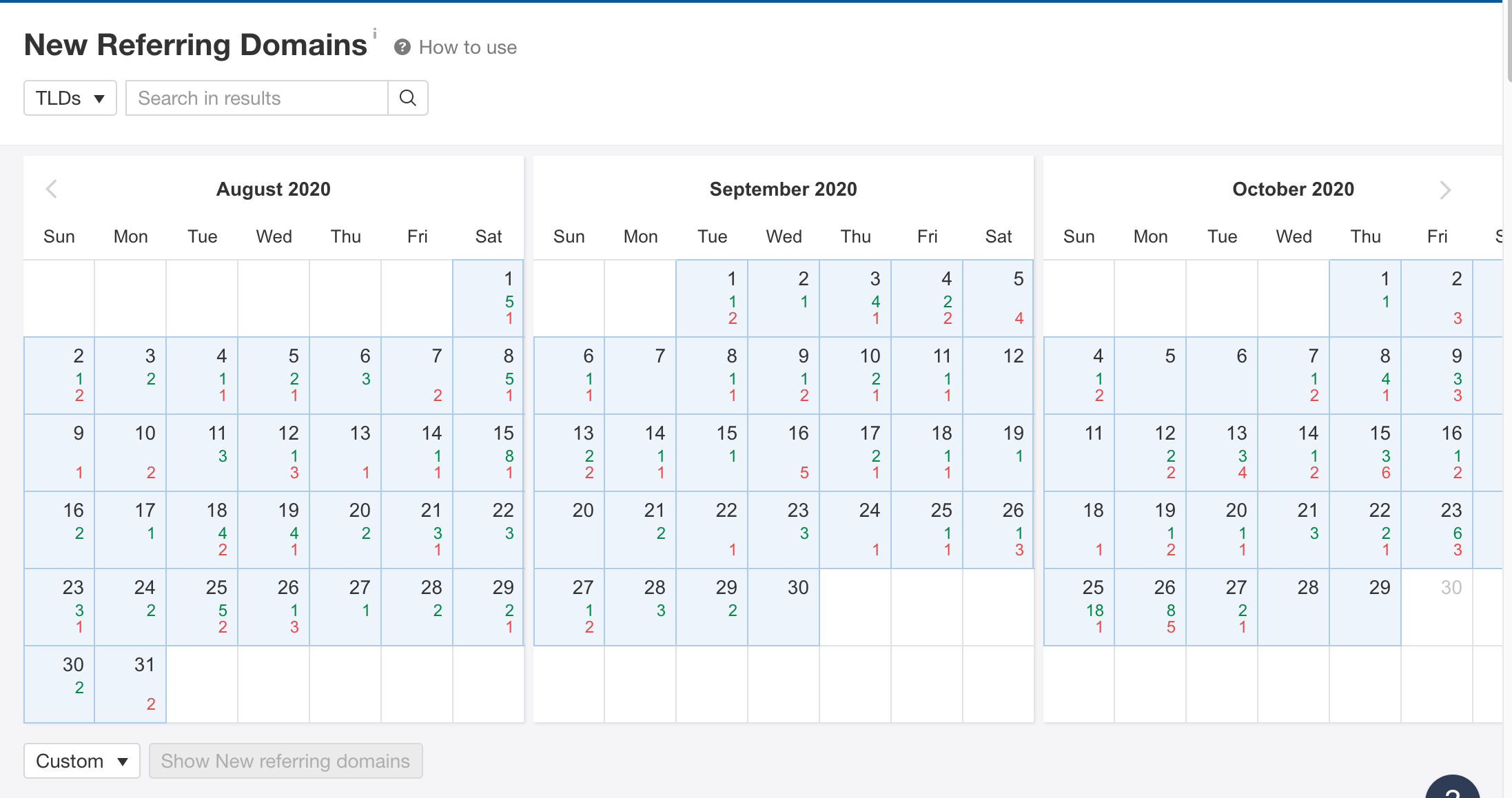
The average number of referring sites that your competitor acquires on a monthly basis is what you’re looking for.
Advertisement
Continue Reading Below
For instance, in August: 69, September: 35, October: 81, the average is 62.
That’s what you need to build in addition to the link gap.
Otherwise, your competitors will always be one step ahead of you.
How to Build Links That Actually Help Outrank SERP Competitors
So, now let’s get to the real link building fun and see how you can cut to the chase and get the most powerful links.
We’ll discuss some of the ways to outrank your competitors and build links to pages that are already at the top of the search results, as well as some general tips for an effective link building strategy.
1. Build Links on Pages That Have Currently Established Some Presence in SERPs
First, take a look at how you can find and build links to the pages that are at the top of search results and are actually relevant for you.
Here’s what you can do.
Try to secure links on pages that are currently ranking high in Google results by search terms that you’re interested in ranking for as well.
Advertisement
Continue Reading Below
Long story short, those pages have already built tons of links and have decent traffic, so you’ll get more SEO value from them compared to any other page.
To get a list of such pages, simply scrape the SERPs with the help of the SEOquake or any other similar tool.
2. Analyze the Referring Domains of the Top 10 URLs That Outrank You
The easiest way to beat your way to the top of the search results is to build links that are similar in quality compared to your competitors, but only if your domain rating is nearly the same as what they have.
In case your DR is lower, be ready to build 10 times more links.
To ease the process of putting together a list of sites where your rivals have already built links you could use the Link Intersect tool in Ahrefs.
This tool will allow you to see the number of common links for the pages that you’re trying to outrank.
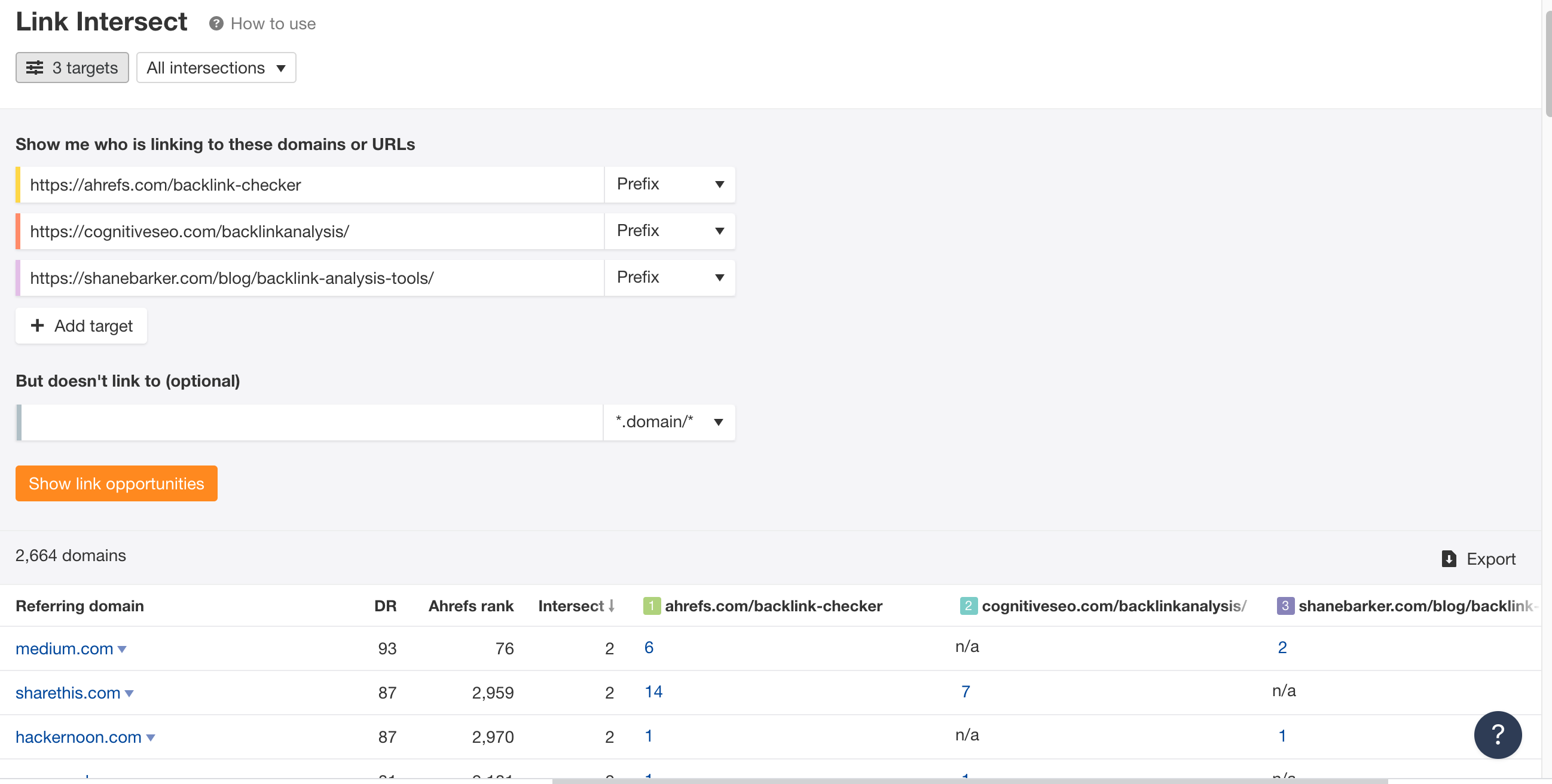
3. Don’t Stick With One Link Building Strategy
Diversity is important for building quality links.
Advertisement
Continue Reading Below
Try to use a combination of different strategies like guest blogging, link insertion, and so on.
The more creative you are, the more natural the links will look to Google.
If you need help in bringing some versatility to your link building strategy, you could check what kind of link building approaches your competitors are following.
To gain this information, you can browse the Ahrefs report that shows the Best pages by link growth and check what your rivals are currently up to:
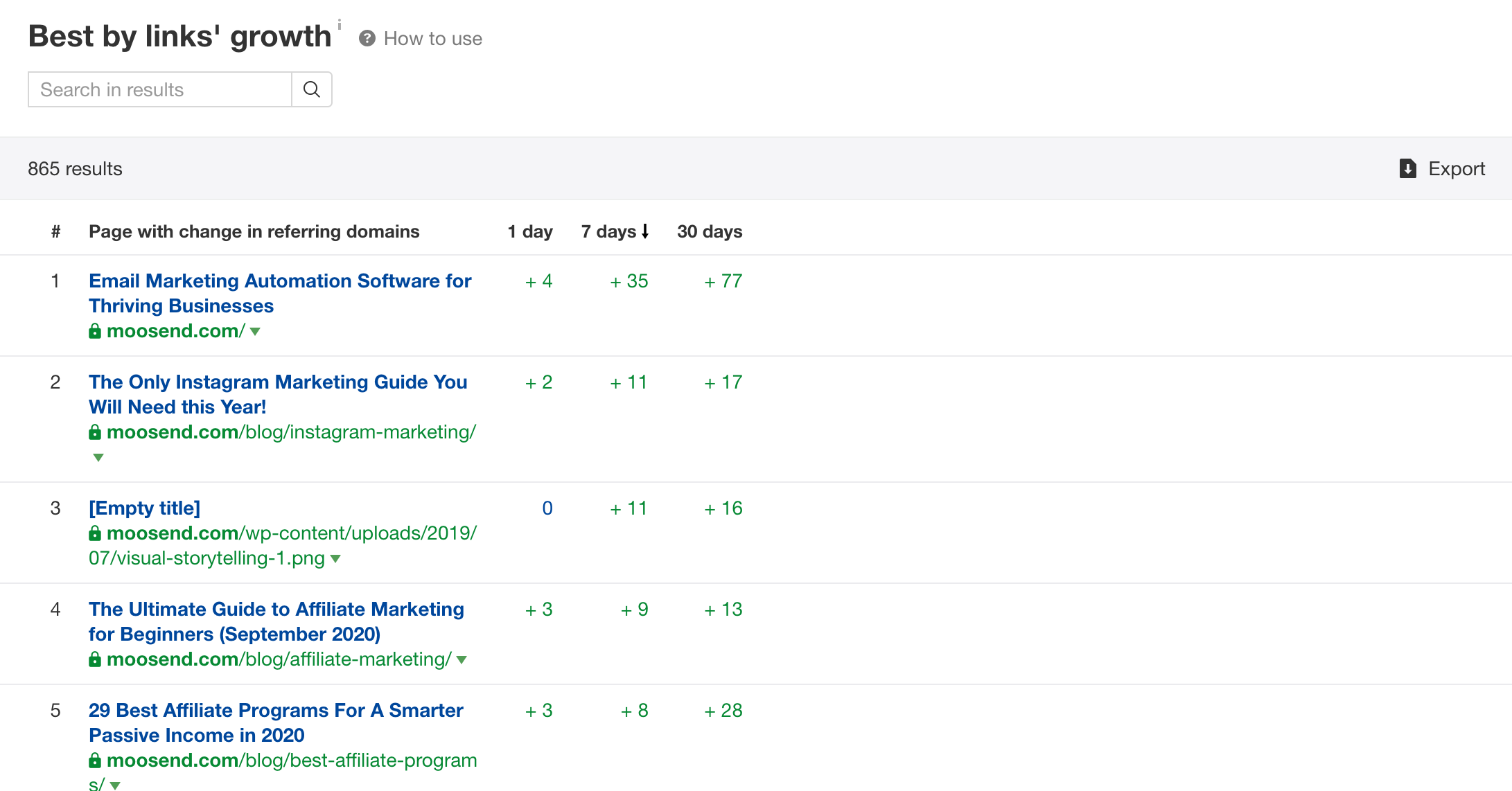
From the example above, you might have noticed that Moosend’s link building strategy is aimed at boosting some of the articles on their blog.
Advertisement
Continue Reading Below
And, if you click on one of these URLs, you also will be able to see the links and how they have been acquired – whether it’s guest blogging, email outreach, or any other strategy.
Use internal linking to support your guest posts.
Guest blogging is a common method of gaining links.
Most of the blogs would allow you to place at least one link to your internal pages, like a brand mention or a link with a keyword-optimized anchor.
So, if you’re into guest blogging, try to negotiate with an editor a possibility of interlinking your post with some other posts on this blog that have some links and ranking well in Google.
To find the most powerful pages of any site, use the Ahrefs report that is called Best pages by Incoming Links:
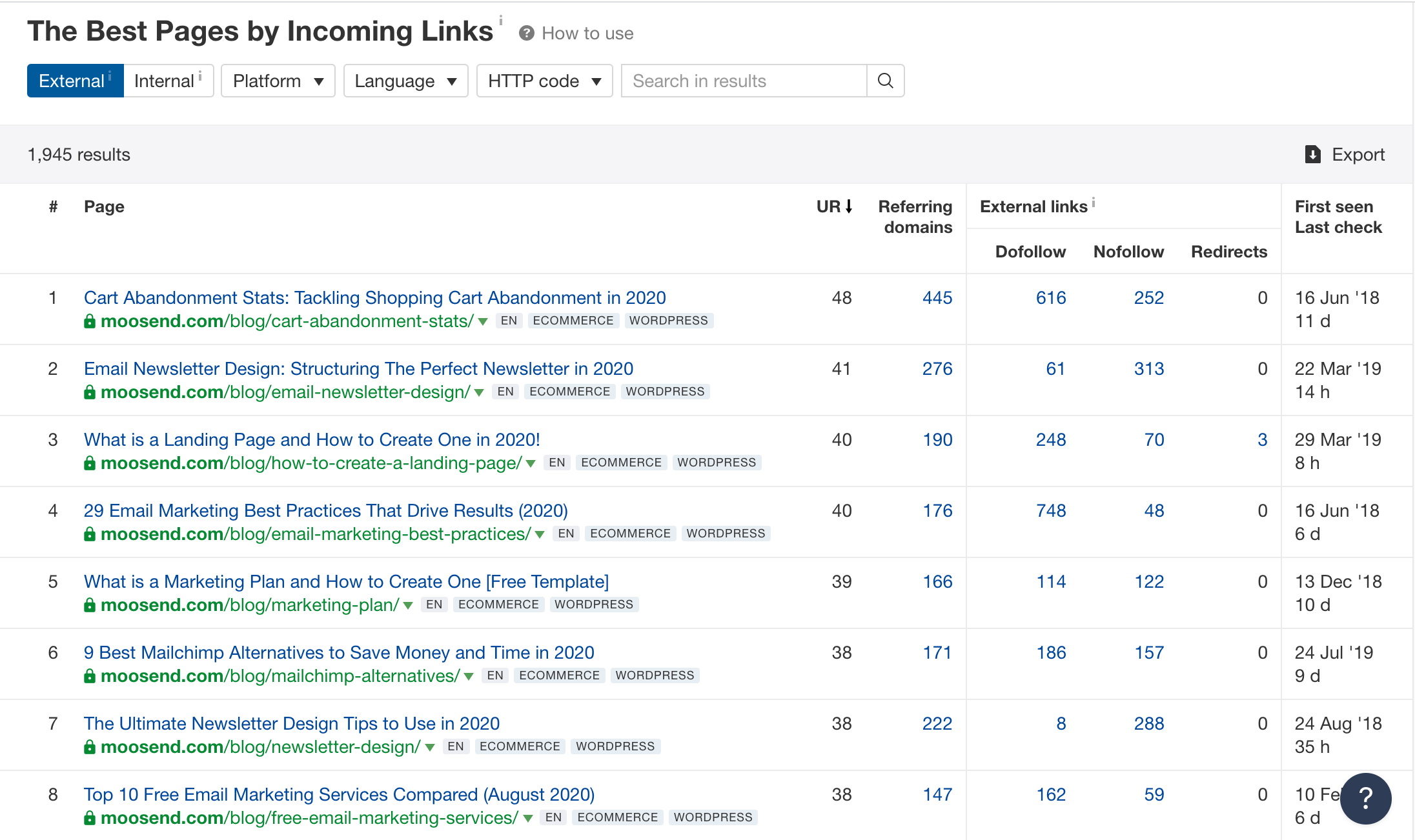
In this report, you can find the ranking of the top-performing pages on the given website, with the number of referring domains, followed links, and nofollowed links.
Advertisement
Continue Reading Below
But if you find some pages with good results, don’t forget to check whether they are relevant for you.
Secure links on sites that don’t accept guest posts
If you want a link with a high SEO value, try to avoid overly popular websites with an inflated rating.
Instead, try to aim at the websites that usually don’t accept guest posts or other contributions.
Here’s the thing: there is a shady practice among some of the leading websites to sell links for brand mentions.
Google is usually quick to detect such suspicious activity, and such links don’t usually carry any SEO value.
However, if you acquire links from corporate blogs that don’t follow such a practice and usually don’t accept guest posts, it will bring you more quality links than a hugely popular website ever would.
So, if your goal is to build good links, aim for such sites.
Concluding Thoughts
Links continue to be one of the most important ranking factors.
Advertisement
Continue Reading Below
Without links, you can’t expect to get to the top of search results.
However, not every link can get you there, as not all of them are created equal.
In all the tips that we covered in this article, you might have noticed one idea that was common to all of them – it is important to focus on quality rather than quality.
Not all the links that top-ranking websites are of high quality, even though the overall number of links is high enough to get to the top of search results.
Your main goal, first and foremost, should be on getting relevant links.
You can achieve that by building links on same-industry sites that are already ranking high, diversifying your link building strategy, and trying internal linking to support your guest posts.
Also, if you want to try guest posting as a link building strategy, search for websites that don’t usually accept such contributions, as, in this case, you will have more chances to get to the top of SERPs.
Advertisement
Continue Reading Below
More Resources:
Image Credits
Featured image by the author
All screenshots taken by author, November 2020


